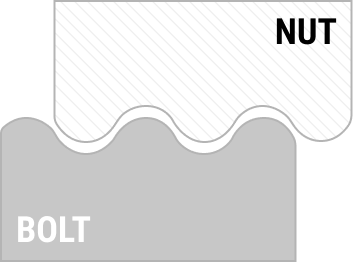
Electrical Thread (Edison) DIN 40400
The DIN 40400 electrical thread, also known as Edison thread, is a commonly used thread in the electronics sector. It originates from a design by the well-known American inventor and businessman Thomas Alva Edison (1847 – 1931), who patented it in 1881. Today, the Edison thread is still known as a light bulb thread. Light bulbs with an E14 or E27 base are widespread and are still widely used today. Moreover, a variety of other lamps are installed using Edison threads, from tiny bulbs in model making to lamps in streetlights or spotlights. Additionally, Edison threads are used for D-type fuses.
The Edison thread is a coarse round thread. This design allows light bulbs to be easily screwed into their sockets without any additional tools.
It is a metric thread, with all dimensions and pitch specified in mm. The thread designation consists of the letter E followed by the external diameter in mm.
In the table for the Edison thread, the common sizes are listed. There are also some additional sizes for special applications. Alongside the external diameter and pitch, the table below also includes information about the core hole diameter. Dies and taps for the Edison thread can also be found in our shop; simply follow the link to the desired size.
